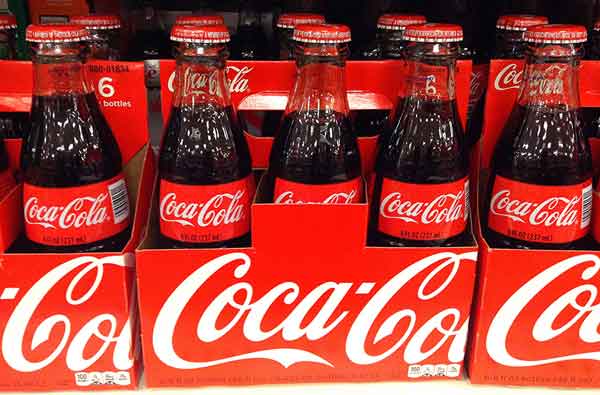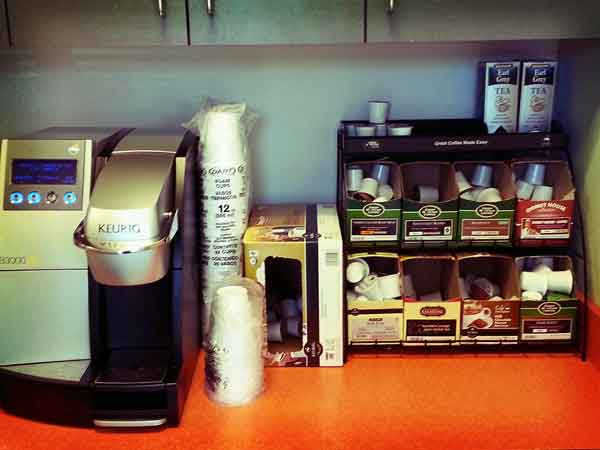
The manufacture of glass containers is an important part of the global economy, so how might Coca Cola sold in plastic pods and other environmental footprint-reducing initiatives affect the glass bottling industry?
Credit: Aaron Paxson on Flickr (Creative Commons License).
Whether it’s classic, diet, or caffeine-free, one thing’s for certain: Coca-Cola is getting the quintessential 21st century makeover.
Coca-Cola Co.—the world’s largest and perhaps best-known beverage brand (No. 3 and the only non-tech company on Forbes’ list of World’s Most Valuable Brands for 2013)—recently signed a $1.25-billion, 10-year deal with Green Mountain Coffee Roasters Inc., which produces Keurig’s single-serve coffeemakers and a host of the system’s K-Cups. As a result, Coca-Cola will exclusively partner with the coffee company in selling its iconic fizzy drinks (and its other cold flat beverages) in plastic pods for Green Mountain’s still-in-development KeurigCold system.
The move signals not only a strategy shift for Coke, but possible shifts for the beverage and glass bottling industries as well.
Though Coca-Cola Co. lays claim to the world’s largest beverage distribution system (1.8 billion servings a day in more than 200 countries through more than 250 bottling partners), soda sales have slumped in recent years, in large part to growing concerns with sugary soft drinks and their artificially sweetened counterparts. And despite the company’s vision to double revenues by 2020 (PDF), in February Coca-Cola posted a 1-percent sales volume decline in the US and slower growth in emerging markets overseas. Green Mountain, on the other hand, posted a 12-percent increase.
“Our 2020 Vision calls for decisive and timely action to continuously improve and evolve our global system to best serve our customers and consumers around the world,” Coca-Cola chairman and CEO Muhtar Kent says in a press release. “This agreement demonstrates our creative approach to partnerships and ability to identify and stay at the forefront of consumer trends driving the industry.”
One of those trends is the continued search for environmentally friendly bottling options for beverages that once were exclusively packaged in glass, plastic, and aluminum.
According to the company’s 2012-2013 GRI report (PDF), only 12 percent of the Coke packaged globally was in glass (10 percent refillable glass, 2 percent “one-way” glass). More than half—55 percent—was sold in polyethylene terephthalate plastic, which is “lighter in weight, shatter-resistant, resealable, and easily recyclable.” The “ultra-glass Contour Bottle” introduced in 2000 was designed for “improved impact resistance, reduced weight, and cost”—and to be 40 percent stronger and 20 percent lighter—and saved close to 52,000 tons of glass in 2006. Coca-Cola’s new PlantBottle, made of up to 30 percent renewable plant-based material, seeks to make its packaging even more sustainable.
Plastics and other biodegradable packaging might generate headlines, but glass still remains an important economic driver both in the US and overseas. According to the Glass Packaging Institute, glass container companies are part of a $5.5-billion industry that employs 18,000 skilled workers in 49 plants throughout 22 states. The European Union is the world’s largest glass producer, says the European Container Glass Federation, manufacturing more than 20 million tons of it each year.
In addition to the size and impact of the industry, health concerns also seem to favor packaging soda—and many other edibles—in glass instead of plastic. Concerns about the chemicals in plastic, particularly the much-publicized bisphenol A (BPA), leaching out of the container and into the consumable have prompted many consumers to favor more inert packaging, like glass.
Coke and its bottling partners recognize glass’s continued relevance across the globe—and they haven’t yet given up efforts to lightweight the iconic contoured bottle, thereby reducing its environmental impact.
Just after the Green Mountain announcement, Ardagh UK revealed that its own lightweighting project had resulted in the manufacture of a 330 mL Coca-Cola bottle below the 200 g level for the first time. According to an Ardagh release, the company’s 190 g version “has been able to retain all the bottle’s trademark dimensions, and maintain quality and strength while improving environmental performance.”
“Our task is keep the brand shape, whilst determining the stress points and the optimum weight of a glass bottle,” Ardagh Design Manager for Glass Europe Carsten Berkau says in the release. “State of the art technology ensures that when we are challenged, we can respond with even greater precision.”
The manufacturer is also working with Coca-Cola on other sustainability projects aimed at reducing energy and CO2 emissions.
Whether “K-Coke” becomes a household staple or heads the direction of New Coke, or whether anyone ever achieves a less-than-190 g bottle, we’re certain that industry will respond with a clear-cut plan to maintain glass’s place in the global economy.
Feature image credit: Mike Mozart on Flickr (Creative Commons License).

